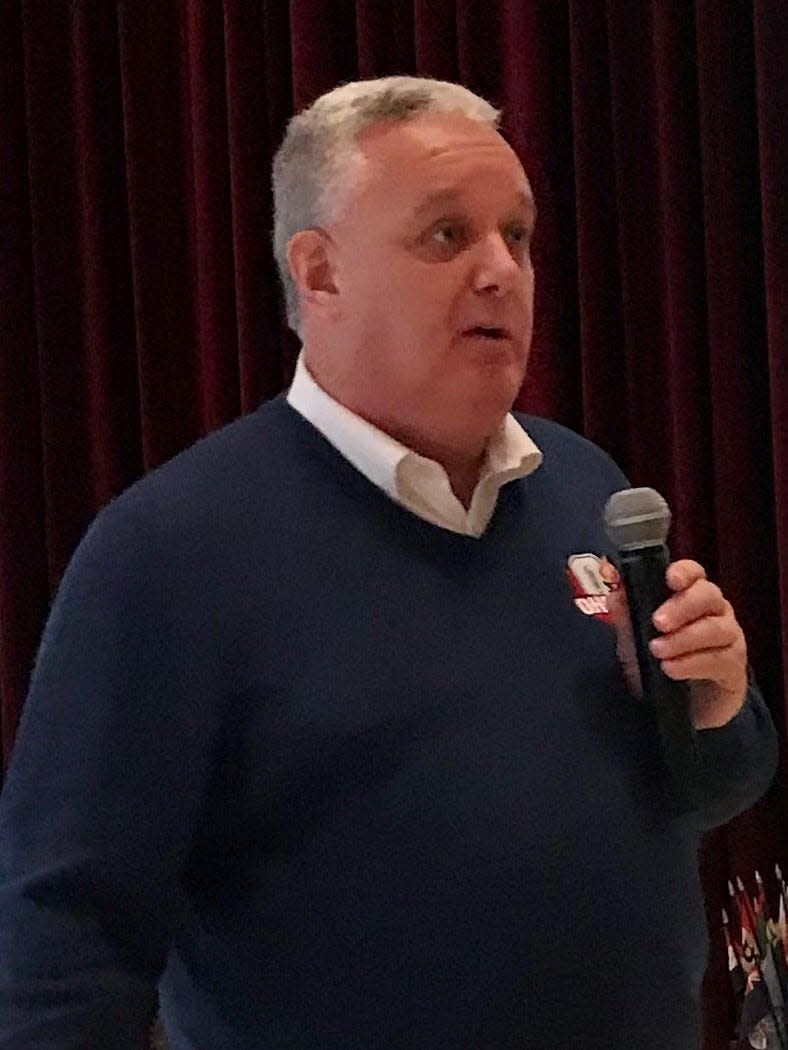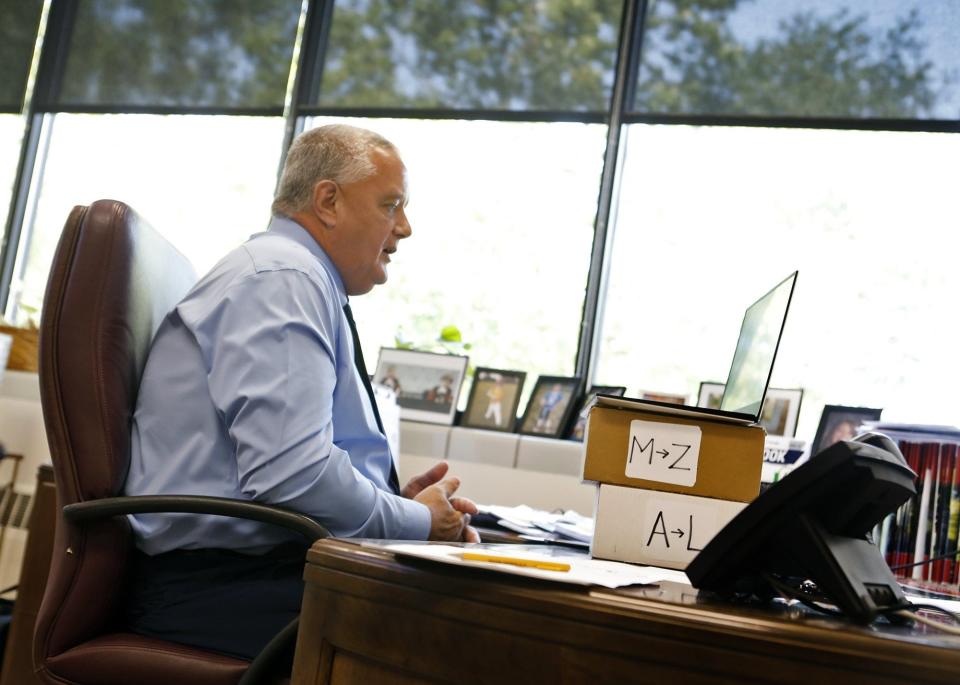McCurdy: NIL coming to Ohio schools sooner than later; it's only fair

COLUMBUS — If you saw Thursday's sports section in the Marion Star, you saw my friend and colleague Jerrod Ulrey lay out how Name, Image and Likeness will be coming to Ohio high school sports sooner than later.
The state's principals who vote on such matters inside the Ohio High School Athletic Association aren't progressive. Like most powers in institutions, status quo is king.
If it's working, why fix it?
If it's not a issue, why address it?
If it doesn't affect me, why does it matter?
That's the thinking.
It took five decades for the OHSAA to finally address competitive balance problems in the postseason for team sports, but eventually the group addressed it.
Open enrollment, transfers, move-ins and eligibility of those students have been tinkered with for years. For each new specific situation that arises, there is a bylaw that gets enacted to address it, sometimes long after the original situation has come and gone.
Nothing happens fast in the OHSAA, so it should have come as no shock when the principals voted overwhelmingly against NIL coming to Ohio schools last spring.
Name, Image and Likeness has only been a thing in college sports a little over a year. If a multi-billion dollar operation like the NCAA is struggling to get a handle on how NIL is used by its members, it's easy to see why principals in the state would be squeamish about this kind of change at the high school level.
OHSAA Executive Director Doug Ute talked about what went wrong with the NIL issue this spring.
"Here in Ohio we modeled ourselves around the legislative piece that colleges passed a year ago and what some other states were doing," he told the Ohio Prep Sportswriters Association in late July. "Our No. 1 goal was to protect the amateurism of high school sports. Anytime you have money coming in, that’s in danger.
"I think we have to look at it this way from our schools standpoint. It was quick. Think how many times the college landscape of NIL redefined itself in the last year. It seems like it keeps redefining itself."
Nine other states have passed NIL bylaws for its high schools, and according to Ute, none of them have encountered problems to date.
But many Ohio administrators envisioned headaches with the NIL proposal.
"We had it so that (the athletes) had to report (NIL deals) to the school. We want them to do that because we want that school to know what their athletes are up to," Ute said. "Our schools were a little worried that now they have to be a legal analyst. No, you don’t, they just have to disclose it to you."
Despite those reassurances, NIL was routed 538-254 by member schools.
"Usually college shapes what they do in high school," he said. "I think we’ll have to see how this all plays out. I’m not getting calls from our member schools saying we need to look at this again."
NIL in Ohio schools won't be a problem until it becomes a problem.
And that problem will likely be here before the OHSAA's principals are ready to move.
Imagine LeBron James being a high schooler right now. Ute acknowledges that James would have gotten a multi-million dollar shoe contract by his junior year if NIL was a thing during his time. Back then and right now, he would have to say no to that kind of money if he wanted to still play for Akron St. Vincent-St. Mary.
But that's an extreme one-of-one example.
In the early 2000s during the James era, there was no such thing as social media, let alone social media influencers. That's changing in the 2020s.
"It’s a social media world right now. We have athletes in Ohio who have been offered pretty good deals who have a lot of followers out there," Ute said.

He told the story of one such high school athlete in the Buckeye state who has a large social media presence. The athlete was offered a deal to endorse a product by sharing it on social media platforms. At something like 80 cents a like, if it went well and was embraced by followers, it could have netted six figures.
The athlete had to turn it down to stay eligible to play.
Is that fair?
"We could be sitting in a math class together and Tim doesn’t play a sport, but he’s a social media person where 100,000 people follow him. He’s given 80 cents a follower or like. He has the opportunity to do that. I don’t because I play basketball," Ute said.
It's a dilemma for sure.
"I have a chance to make a couple hundred thousand dollars and my parents say can you defer that income to later in life? I don’t play in the NBA," Ute said, using a hypothetical situation. "I get to 26 or 30 years old and want to buy a house, and I think I could have made $250,000 back there."
But there are potential complications that can arise from allowing athletes to trade on their names, images and likenesses. High school recruiting is chief among the issues that could be spawned by NIL and that the OHSAA wants to avoid.
Come to our school where we have a big booster who will take care of you. Play here because we are a higher profile place than your current school and can help you be a bigger influence. Our market gets you closer to the movers-and-shakers you want to move and shake with.
"How do you protect the amateurism of high school athletics because we all know with that all that comes," Ute said. "We’re seeing it in college. Isn’t Ohio State using that as a recruiting tool? Alabama? Isn’t that why Nick Sabin is so upset right now. My personal feeling is it’s because he doesn’t have $13.5 million sitting there (in NIL deals for players)."
NIL in high school can be LeBron James getting eight figures from a shoe company, or an Instagram star earning pennies on the dollar for every person he or she influences until it adds up to thousands. But it can be even more grassroots and more innocent than all that.
"Let’s face it, NIL in Ohio is Jake plays at Plymouth and gets 25 (points) and takes his girlfriend to get a pizza on the way home and the dude at the pizza shop says, ‘Great game Jake! Here’s your pizza!' That’s the benefit a lot of kids get in high school right now. It’s that kind of stuff," Ute said. "The percentage of athletes who would actually get an NIL is very, very small. It’s less than one percent of college athletes have a major deal."
As I said, it's not a problem until it becomes a problem.
"I ask, is it fair to that high school athlete right now who has that earning potential?"
The answer is no.
And because the answer is no, someone is going to challenge the OHSAA in court, and the OHSAA is going to lose. Then it becomes the wild west and an uncontrollable mess.
Or maybe the powerbrokers inside the OHSAA go against their grain and get proactive by designing a bylaw that addresses the issue and the concerns around it in a way that is acceptable to both the schools and athletes
Nothing happens fast with the OHSAA — especially big issues — but NIL is coming to Ohio's schools sooner than later.
Rob McCurdy is the sports writer at the Marion Star and with USA Today Network-Ohio. He can be reached at rmccurdy@gannett.com, 419-610-0998, Twitter @McMotorsport and Instagram @rob_mccurdy_star.

This article originally appeared on Marion Star: McCurdy: NIL coming to Ohio schools sooner than later; it's only fair

